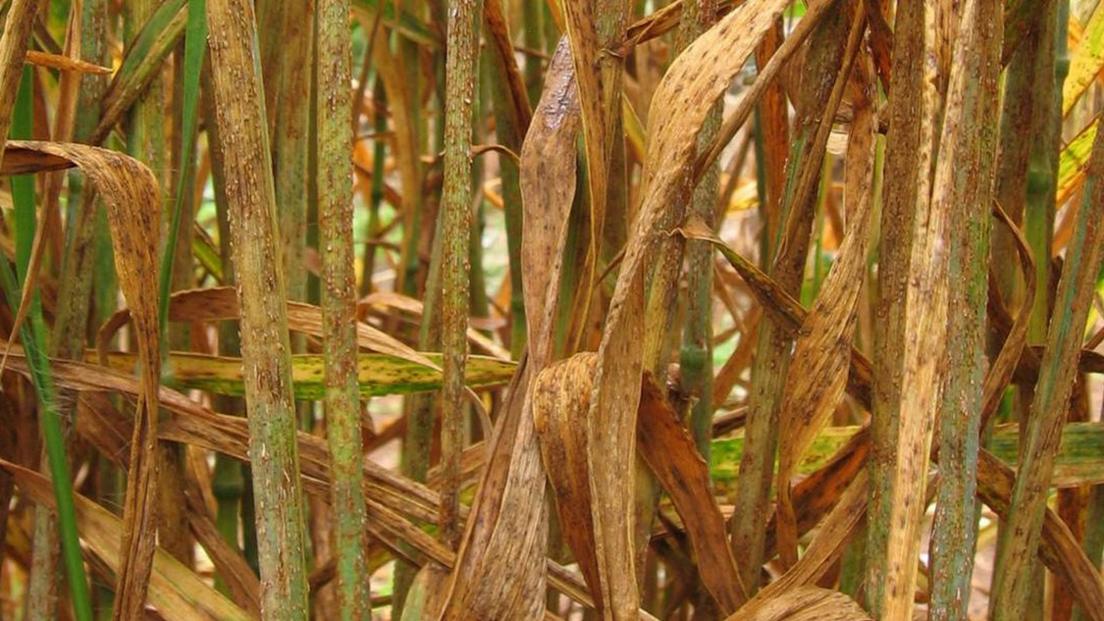Food crop wild relatives endangered
- Published

"Hotspots" are places with a high concentration of different types of crop wild relatives that could be potential reserve areas
Scientists have released the most complete database of the wild relatives of common food crops.
These wild relatives are closely related to our crops, but grow naturally under a wide range of environmental conditions.
This makes them essential for the development of more resistant and adaptable food sources.
However, many of them grow in conflict zones in the Middle East, where their conservation is threatened.
Scientists from the University of Birmingham have highlighted "hotspots" around the globe, which are areas where many different types of wild relatives are concentrated. Here, they could be conserved to secure future global food resources.
Farmers crossbreed the wild relatives with existing crops to produce varieties of grains, vegetables, fruits, legumes and tubers that are more adaptable to local climates.
Lead scientist Dr Nigel Maxted from the University of Birmingham told BBC News: "Our goal is not only crop wild relative conservation, but to promote use of the conserved diversity by farmers and breeders to develop crop varieties with greater resilience to climate change."

The database lists wild crop relatives around the world, their traits and location
The wild species may contain many useful traits, such as drought tolerance or resilience to pests and diseases.
For example, Aegilops tauschii, the wild relative of wheat, is resistant to the Hessian fly, which is a pest of cereal crops; Saccharum arundinaceum, a relative of sugar cane, can survive very low temperatures; Prunus ferganensis, the wild version of peach, is tolerant to droughts.
Dr Nigel Maxted said: "There has previously been no opportunity to systematically conserve and use crop wild relatives at a global scale as there was a lack of clarity over their identities and distribution.
"By creating an inventory we can discover which countries and regions are the richest in terms of priority crop wild relatives, and we can then more efficiently plan and coordinate conservation efforts to target their survival."

Half of temperate priority crop wild relative species are found exclusively in the Fertile Crescent
The inventory, external lists 173 crops and their 1,667 priority wild relatives, along with their traits and location.
Mr Mike Ambrose, from the department of crop genetics at the John Innes Centre in Norwich, is a user of the database and has provided his knowledge of peas during its compilation.
He explained: "It is a very interactive database with a lot of functionality and completely open and free.
"Its creation has involved many experts from around the world, interacting and providing input to develop it and complete what is a global resource."
The researchers have found that 12% of the crop wild relatives are threatened by extinction and all are likely to have suffered a loss of genetic diversity due to urbanisation, climate change and conflict in hotspot areas.
Half of the priority species in temperate regions are located in the Fertile Crescent, an area that arcs around the Near East.
Ongoing conflict in some of these areas makes the access to crop wild relatives difficult, but the team of scientists, together with the Food and Agriculture Organisation of the UN, external, are now working on strategies to protect the hotspots.
The plan is to store the wild relatives' genetic information in gene banks, where the material can be kept for up to 300 years, as well as to conserve the crop relatives in the wild.
"It is very important that we conserve these species in secure gene banks, but it is also critical to conserve them in their natural habitat as well so they will continue to adapt to changes in the climate as well as threats from pests and diseases," added Dr Nigel Maxted.
"The global population is now 7.3 billion and by 2050 it will be 9.6 billion, so it is now even more crucial that we conserve crop wild relatives as part of the wider need to address global food security issues."

- Published27 June 2013
